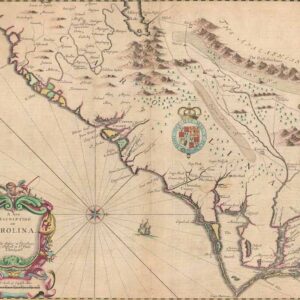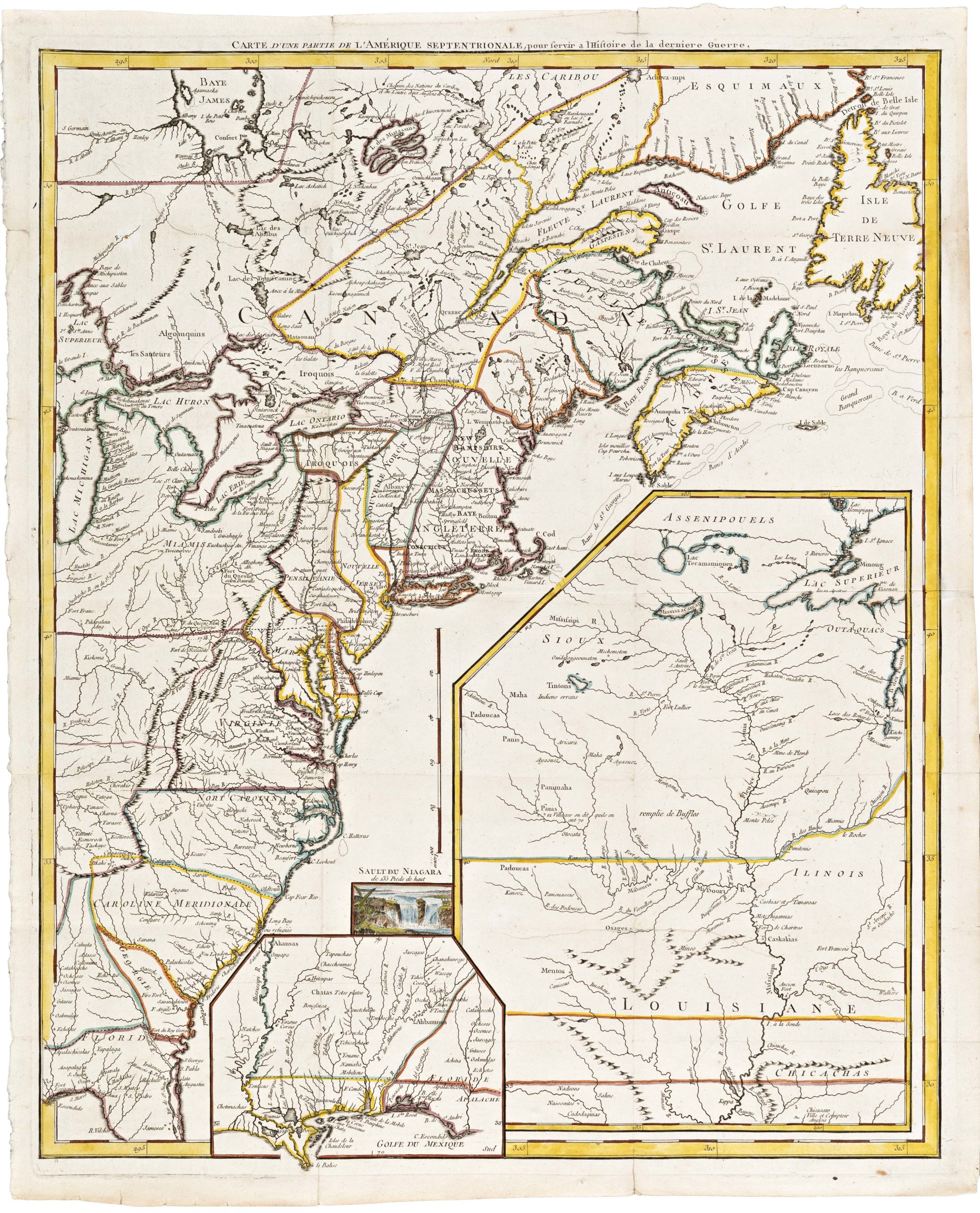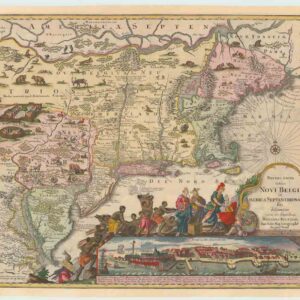First state of Wytfliet’s important map of the Mid-Atlantic Seaboard, derived from the first atlas to focus on mapping the New World.
Norumbega et Virginia 1597
Out of stock
Description
Cornelis van Wytfliet’s Norumbega et Virginia is a keystone in any substantial collection focussing on pre-colonial North America. Presented here in its rare first state from 1597, the map is among the earliest printed maps to focus explicitly on the East Coast of North America. It appeared in Wytfliet’s pioneering Descriptionis Ptolemaicae Augmentum, the first atlas to concentrate specifically on mapping the New World. This atlas has become an icon in the history of American geography, setting an important precedent for regional cartography.
Despite the focus indicated in its title, the map provides a complete overview of the eastern seaboard, from Nova Scotia’s Cape Breton in the north to Pamlico Sound and the Cedar Island Peninsula in the south. It constitutes an important representation of the knowledge that Europeans – especially the Dutch – had accumulated in North America. Although we note the inclusion of the Roanoke colony established by John White in 1587, Wytfliet’s map generally predates the initial colonization of the East Coast by the English. Similarly, the rendition of Canada builds on the state of knowledge as it was prior to Champlain’s voyages of exploration. It is, therefore, no exaggeration to classify this map as among the earliest accurate maps of North America, even though the depth and complexity of knowledge about the region would explode over the next thirty years.
Most cartographic scholars agree that Wytfliet’s map is the most accurate cartographic rendition of this region prior to Johannes de Laet’s Nova Anglia, Novvm Belgivm Et Virginia from 1630. The only reliable printed map to precede Wytfliet’s was that of John White, the founder of the second Roanoke Colony and one of the first European surveyors and mapmakers to live in America. The Dutchman Theodor de Bry published White’s map in 1590 as part of his massive compilation on the Americas. This map was the first ever to name Virginia, making Wytfliet’s just the second printed map in history to apply this toponym.
While the term ‘Virginia’ at this stage could denote most of the Mid-Atlantic coast, the other toponym in the title has a more obscure origin and meaning. The French explorer Jacques Cartier returned from the Canadian wilderness in 1534 with reports of a large river in the area around modern-day Montreal. The Native American name for the river was apparently Norumbega, although this is difficult to confirm. What gave the name weight in cartographic circles was its commercial appeal, for Cartier had brought back rocks presumed to be diamonds, which he had picked from this river. While these were soon proven worthless crystals, the story quickly gained a life of its own.
Consequently, some people began associating the term with a mythical but wealthy native kingdom. The mythology was short-lived, making it one of those evocative terms used only in the earliest North American maps. Once Champlain conducted his explorations in the early years of the 17th century, it was soon found to be untrue. Moreover, when he subsequently used the toponym for a small Indian village in Maine, the magic was gone, and it was quickly dropped from new maps.
While many details of Wytfliet’s map appeal to us precisely because they belong to the earliest phase of European exploration and settlement in America, this also means that we should expect to find rather obvious errors in the geography. A common mistake that Wytfliet replicates is the stretching of the mid-Atlantic coast much further north than reality. On Wytfliet’s map, this is especially apparent when noting the position of Chesapeake Bay (Chesipooc Sinus). Although the same discrepancy is not as visually apparent on the White map, the mistake is also present here, revealing the White map as the most likely source of the error.
Census
According to Phillip Burden, there are three distinct states of this map. Ours is a First State example, characterized by the inclusion of the year 1597 in the title cartouche and an erroneous marking of 39 degrees latitude as 30 along the left graticule. Second State examples have seen the year removed from the title cartouche, and in the Third State, the latitude error has been corrected as well.
The OCLC identifies First State maps in a number of institutional libraries, including The British Library (no. 557849439), Bibliothèque Nationale de France (no. 1176986361), and Bayerische Staatsbibliothek (no. 159838669).
Original and intact copies of Wytfliet’s Descriptionis Ptolemaicae Augmentum, which contains the map, can be studied at more than forty different institutional libraries around the world (OCLC no. 82772249)
Cartographer(s):
Cornelis van Wytfliet (died around 1597) was a geographer from Leuven in the Habsburg Netherlands, best known for producing the Descriptionis Ptolemaicae augmentum sive Occidentis notitia brevis commentario, as a supplement to Ptolemy’s Geographia.
‘Descriptionis‘ was published in Leuven in 1597 and is considered the first atlas devoted exclusively to the New World. It featured nineteen maps: one world map and eighteen regional maps. The regional maps, in particular, are notable as early representations of specific areas of North and South America.
Condition Description
Expertly backed.
References



![[First State] Panorama of the Seat of the War Birds Eye View of Virginia, Maryland, Delaware and the District of Columbia](https://neatlinemaps.com/wp-content/uploads/2024/05/NL-00664-scaled-1-300x300.jpg)
![[First State] Panorama of the Seat of the War Birds Eye View of Virginia, Maryland, Delaware and the District of Columbia](https://neatlinemaps.com/wp-content/uploads/2024/05/NL-00664-scaled-1.jpg)
